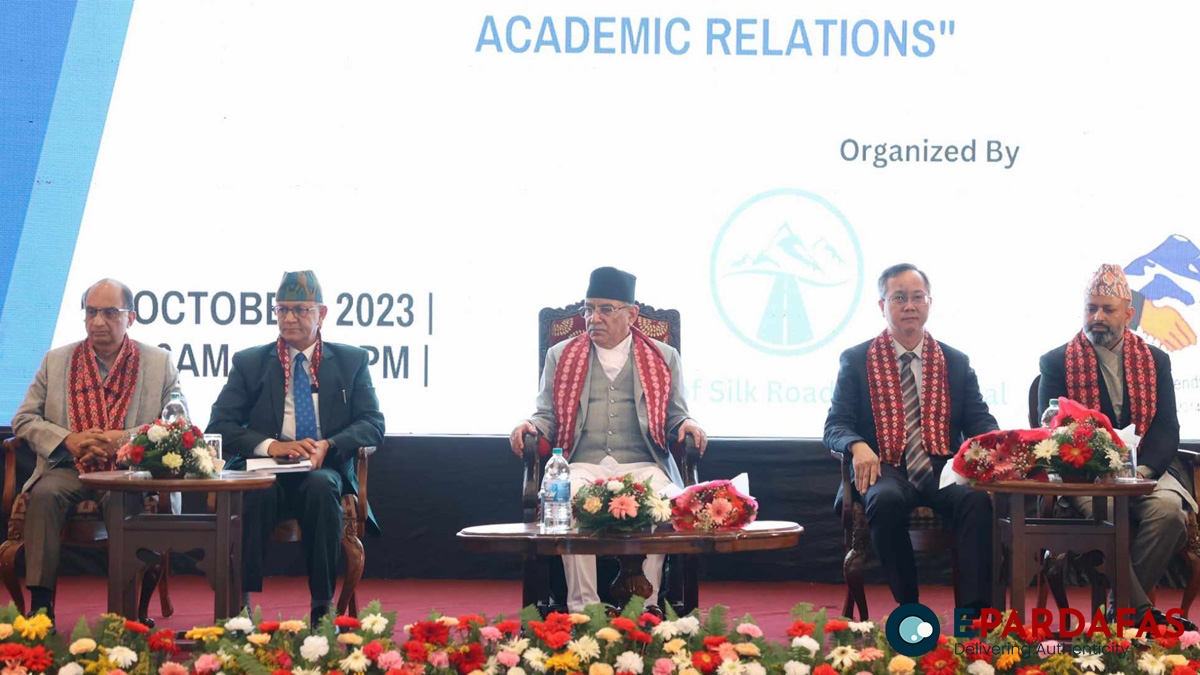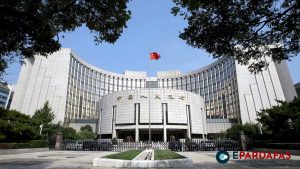
Why Does China Pursue the BRI Project in Nepal?
Prime Minister Pushpa Kamal Dahal ‘Prachanda’ acknowledged that China’s Belt and Road Initiative (BRI) can serve as an important resource for Nepal’s development and assured that the government will soon plan for its implementation. However, Prime Minister Dahal did not address the significant economic challenges faced by countries that have implemented the BRI project.
During an event titled ‘A decade of BRI: Deepening trade, investment, connectivity and academic relations,’ Prime Minister Dahal reiterated the government’s commitment to execute BRI projects in Nepal. He emphasized the need for significant financial investment in Nepal’s infrastructure development and believes that the BRI can play a pivotal role in achieving this goal.
Despite these concerns, Prime Minister Dahal recognizes the BRI’s potential as a vital resource for Nepal’s development. He has committed the government to plan for its implementation, emphasizing the importance of this initiative during a program titled ‘A Decade of BRI: Trade, Investment, and Communication Network.’
Dahal acknowledges the need for substantial financial investments in Nepal’s infrastructure development and sees the BRI as a potential source for such development. He intends to initiate the planning process for its implementation.
During his visit to China to discuss the BRI project, he took the opportunity to clarify its significance to Chinese leaders, the academic community, and the business sector.
Dahal stated, “I aim to play a crucial role in conveying accurate information about the multifaceted aspects of the comprehensive concept of inclusive development represented by the BRI. This concept, based on the principle of mutual benefit, was introduced by Chinese President Xi Jinping in 2013. I believe that expanding the network of connections between different geographies, cultures, and civilizations will enhance our collective efforts to address common interests and achieve shared prosperity.”
However, it’s essential to acknowledge that there are concerns about the BRI project, particularly regarding Chinese loans. Nepal’s neighboring countries like Sri Lanka, Bangladesh, Pakistan, and Myanmar have faced challenges related to such loans, which are worth considering in Nepal’s engagement with the BRI.
When we examine the dire situations in Sri Lanka and Pakistan, it becomes evident that Bangladesh is cautious about progressing with agreements related to China and the BRI projects. China has initiated BRI projects in numerous low- and middle-income countries, including Sri Lanka, Pakistan, Cambodia, Zambia, Congo, Sudan, Ethiopia, and Angola.
Despite Chinese President Xi Jinping’s announcement that the BRI project would uplift around 7.6 million people from extreme poverty and elevate 32 million people out of moderate poverty by 2030, countries adopting the BRI in China seem to have faced economic difficulties and reached a state of crisis. Pakistan, in particular, is grappling with issues of transparency, debt, and corruption within the China Pakistan Economic Corridor (CPEC), a key component of China’s ambitious BRI projects. Currently, CPEC remains incomplete due to disorganization, debt crises, and corruption, leading China to curtail further loans.
The Shehbaz Sharif government decided to dissolve the CPEC authority after Chinese power producers shut down 1,980 MW of generating capacity due to unpaid dues of Rs 300 billion. Furthermore, Pakistan’s significant Main Line 9ML (10) railway project, connecting Karachi with Peshawar, has also stalled. These projects have encountered obstacles as both Islamabad and Beijing have struggled to resolve their differences.
In Myanmar, where the military rulers enjoy China’s support, there is evidence of yielding to Beijing’s pressure. China actively assisted in the overthrow of the democratically elected government led by Aung San Suu Kyi to protect its interests, including the Myanmar Natural Gas Power Project, a prominent BRI initiative.
Aung San Suu Kyi’s government notably reduced the price of a China-backed deep-water port project in Rakhine State from $7.3 billion to $1.3 billion. Following this adjustment, China initially announced its withdrawal from Myanmar’s deep water project. However, after the military took control, China resumed its economic engagement with Myanmar. Notably, China is presently engaged in the development of a deep-sea port project in Rakhine State, Southeast Asia.
Elsewhere, Kuala Lumpur canceled BRI projects valued at $11.8 billion between 2013 and 2021. The Philippines decided to suspend a $5 billion rail project, one of the flagship BRI projects, due to challenges in cooperation with China. Kazakhstan and Bolivia also chose to cancel BRI initiatives. Meanwhile, Zambia, a landlocked Southern African nation, faces a severe crisis primarily due to an external debt burden from China exceeding $17 billion.
Zambia has become a testing ground for Beijing’s debt trap strategy in Africa. It has reached out to China for assistance in restructuring loans from private lenders for major BRI infrastructure projects, including highway bridges. Should China decline Zambia’s request, this African nation is likely to follow a path similar to Sri Lanka. Overall, it appears that China initially invests substantial funds for development under the BRI project. When evaluating China’s actions within the BRI initiative thus far, a pattern emerges where China provides loans to countries that struggle to repay them. China then takes control of the project for an extended period, influencing the country’s politics, business, and expanding its international network.
Experts estimate that only a few out of the total 149 countries and 32 international organizations that have signed MoUs with China for the BRI project can effectively manage the challenge of sustaining loans provided by China within the BRI framework. Most other countries are bound to come under China’s influence in various ways. Examining the Hambantota port built in Sri Lanka offers insight. Although this port was constructed on 1500 acres of land along the world’s busiest shipping route, it struggled to attract international trust due to its Chinese origins. In 2012, it only managed to draw 12 vessels, while a port located 260 km away, Colombo port, attracted more than 3000 vessels.
Following the 26-year-long ethnic civil war in Sri Lanka, the BRI project was introduced as a development initiative. The current situation in Nepal mirrors this pattern, with ethnic and religious conflicts being exacerbated. Seeds of discord were sown among the Kiratis, and amidst this turmoil, the BRI project was pursued. From Nepal’s perspective, considering a government and leadership ensnared by corruption, the country’s condition post-BRI could resemble Sri Lanka’s plight.
Given Sri Lanka’s inability to repay its loans during the project’s construction, it appears that China may lease the Hambantota port under China’s Belt and Road Initiative for up to 198 years, until 2099. A significant portion of China’s investment, approximately 80 percent, is focused on the port and the industrial area on Hambantota Island. Therefore, it is conceivable that China may continue to lease the project from Sri Lanka beyond the initial 99-year term.
There is growing suspicion that this project is not merely an extension of China’s one-China policy. It appears that China’s strategy is to ensnare the world in a debt web, running projects on long-term leases. While the lease papers stipulate a 99-year period for the port in Sri Lanka, there is a provision allowing for an additional 99-year extension. This clearly indicates that China intends to maintain a presence within Sri Lanka for roughly 200 years and operate its activities through commercial means. China’s expansion of its business network within Sri Lanka via the port lease is evident. While Sri Lanka may experience some economic development over the next 99 years, it is equally evident that China will establish a complete dominance over the country.
Despite being physically located outside Sri Lanka, China has successfully gained control over a critical trade route in Sri Lanka for 99 years through its debt entanglement. Should China continue to operate within the country for 99 years, the extent of its dominance is foreseeable. The purpose behind this analysis is not to take a stance for or against the BRI but to promote national interests, nationalism, and defend independence and sovereignty. The examples of Sri Lanka and Pakistan, where self-determination is compromised within the BRI projects, serve as a cautionary tale, emphasizing the importance of safeguarding Nepal’s interests in the future.














Comments